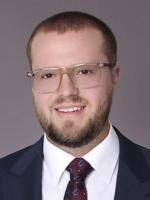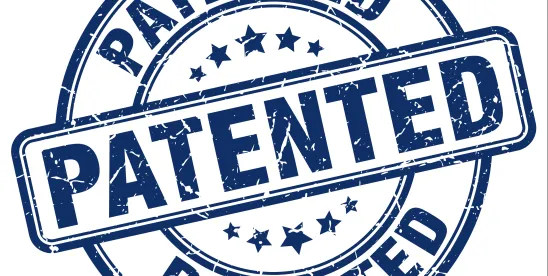This case addresses[1] the application of issue preclusion in scenarios where two closely related cases allege patent infringement against different versions of the same technology. Specifically, this case discusses whether a party’s waiver of a doctrine-of-equivalents theory in an initial lawsuit extends to a subsequent case involving a newer iteration of the technology previously litigated.
Background
The present case arises from the Wisconsin Alumni Research Foundation (“WARF”) appealing two similarly situated cases: WARF I and WARF II. Both cases center around the same patent owned by WARF – U.S. Patent No. 5,781,752 (the “’752 patent”). In WARF I, WARF asserted claims of the ’752 patent against Apple’s A7 and A8 processors. In WARF II, WARF asserted claims of the ’752 patent against Apple’s newer generation A9 and A10 processors.
WARF I proceeded through a jury verdict finding Apple’s A7/A8 processors infringed the ’752 patent. Apple appealed to the Federal Circuit, which then reversed, finding Apple’s A7/A8 processors did not literally infringe the ’752 patent. Following the reversal, WARF requested a new trial on infringement under a doctrine-of-equivalents (“DOE”) theory. Apple opposed this request.
Regarding WARF’s request for a new trial in WARF I, the district court denied WARF’s request to pursue an abandoned DOE theory, and entered judgment in favor of Apple. The district court also entered a final judgment in favor of Apple in WARF II, which had been stayed pending appeal, finding the action was precluded by the findings in WARF I.
WARF appealed both district court decisions, arguing it had not abandoned its DOE theory in WARF I and that the court should not have precluded WARF II.
Issue(s)
Whether WARF waived its DOE theory in WARF I.
Whether the ruling in WARF I precluded the issue from being brought in WARF II.
Holding(s)
The Federal Circuit held that the district court correctly determined that WARF waived its DOE theory in WARF I.
The Federal Circuit held that under both issue preclusion and the separately analyzed Kessler doctrine, the district court correctly barred WARF’s DOE argument in WARF II, based upon the ruling in WARF I.
Reasoning
With respect to the dispute over WARF’s DOE theory, WARF maintained that it neither explicitly nor implicitly waived its DOE argument in WARF I. WARF’s position relied on its initial belief that Apple’s actions constituted literal infringement – under the direct interpretation of the’752 patent’s language – thereby rendering a DOE theory of infringement unnecessary. WARF further contended that it was Apple’s strategic decision not to seek a specific claim construction for the disputed term that influenced WARF’s litigation strategy, leading it to focus solely on a theory of literal infringement during WARF I.
Apple countered this narrative by asserting that WARF’s decision to forego its DOE theory was a calculated move, made in exchange for Apple agreeing to withhold its own related patent from evidence. Further, Apple pointed the Federal Circuit’s decision in WARF I, which explicitly highlighted the acknowledgement between the parties regarding WARF’s decision to discard its DOE theory before the trial commenced. Apple further argued that this acknowledgment, in combination with the Federal Circuit’s previous decision to reverse without remand, firmly established that WARF had indeed waived its right to assert this theory.
In its analysis, the Federal Circuit reasoned that “no change in the claim construction” would justify WARF’s omission of its DOE theory from the WARF I trial. Additionally, the Federal Circuit found that WARF’s strategic abandonment of this theory was a deliberate choice, unconnected to any issues of claim construction, but instead a type of “quid-pro-quo” with Apple to prevent further introduction of evidence. Consequently, the Federal Circuit agreed with Apple, concluding that WARF had effectively waived its DOE argument concerning WARF I by choosing not to present it to the jury.
With respect to the application of issue preclusion to WARF II, the Federal Circuit delineated the prerequisites for invoking this doctrine: “(1) the issue sought to be precluded is the same as that involved in a prior action; (2) the issue was actually litigated; (3) the determination of the issue was essential to the final judgment; and (4) the party against whom estoppel is invoked was represented in the prior action.” The Federal Circuit clarified that only the first two criteria were disputed in WARF II.
The Federal Circuit examined the two criteria separately. First, the Federal Circuit addressed whether the processors in question (A7/A8 in WARF I and A9/A10 in WARF II) were “essentially the same,” and second, whether the issues of literal infringement and infringement under DOE fall under the same umbrella of a singular issue of infringement.
Drawing on evidence from the trial record, including WARF’s own representations and the potential for consolidating WARF I and WARF II, the Federal Circuit affirmed the district court’s conclusion that the processors were essentially the same for the purposes of the first issue preclusion element.
Addressing the second contested element, the Federal Circuit considered WARF’s argument that the distinct inquiries for literal infringement and DOE signify separate issues. The Federal Circuit rejected this view, emphasizing that both forms of infringement are governed by the same statutory provision – 35 U.S.C. § 271 – which delineates the scope of direct patent infringement. The Federal Circuit reasoned that this singular statutory foundation unified literal infringement and the DOE under the same legal issue for purposes of issue preclusion.
Moreover, the Federal Circuit held that the Kessler doctrine further barred the prosecution of WARF II. WARF argued that this doctrine, designed to prevent subsequent harassment of an adjudged non-infringer continuing its business post-judgment, did not apply, due to the timing of the A9/A10 processor sales. However, the Federal Circuit clarified that the Kessler doctrine indeed protects against the assertion of claims against essentially the same products, regardless of whether they were sold before or after a judgment of noninfringement. Thus, the Federal Circuit found WARF’s interpretation and application of the Kessler doctrine to be unpersuasive.
In conclusion, the Federal Circuit affirmed the district court’s denial of WARF’s motion for a new trial in WARF I and affirmed the district court’s conclusion that WARF I precluded WARF II.
FOOTNOTES
[1] Wisconsin Alumni Research Foundation v. Apple Inc. No. 2022-1884,2022-1886 (Fed. Cir. Aug. 28, 2024)



 />i
/>i
